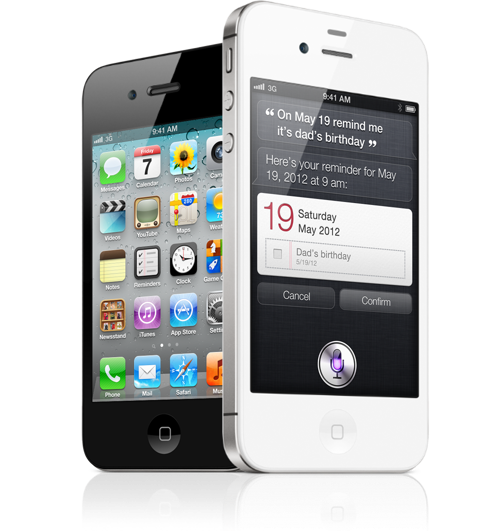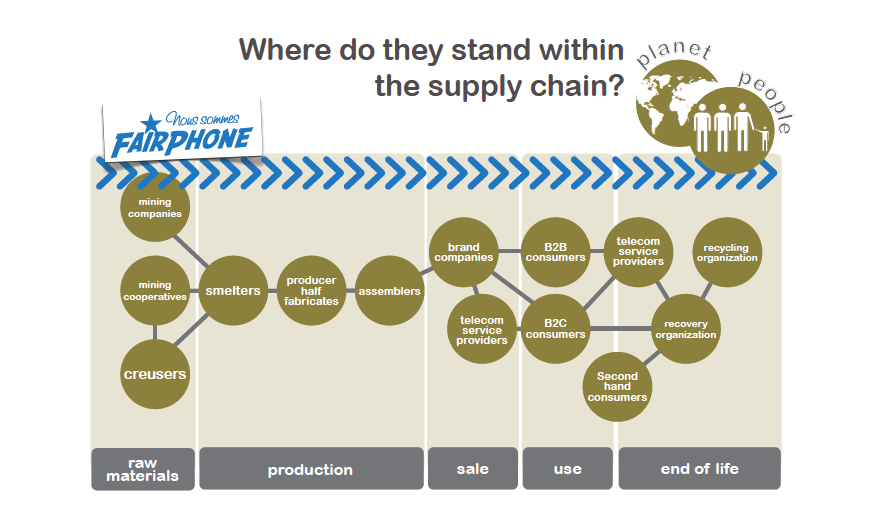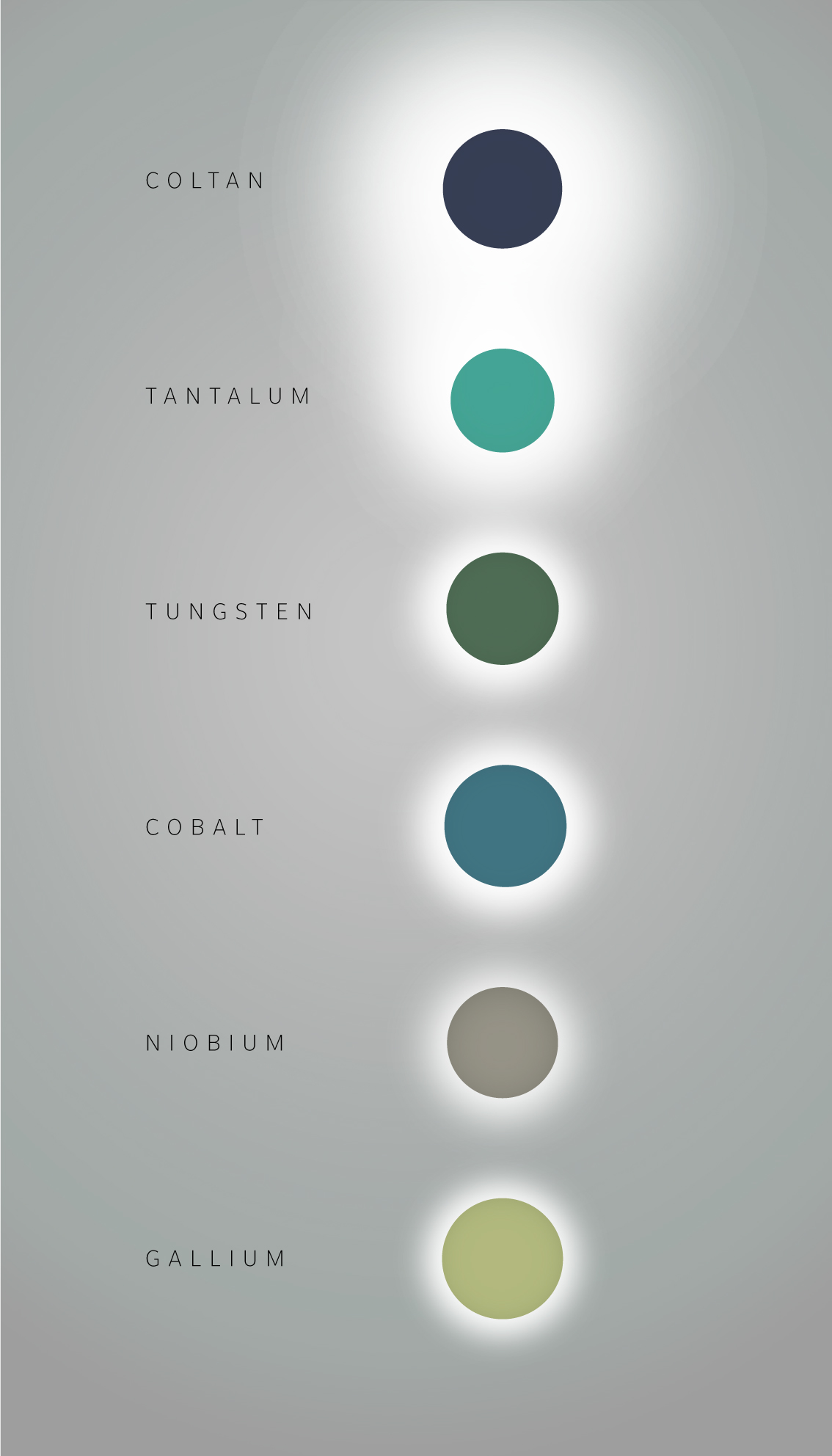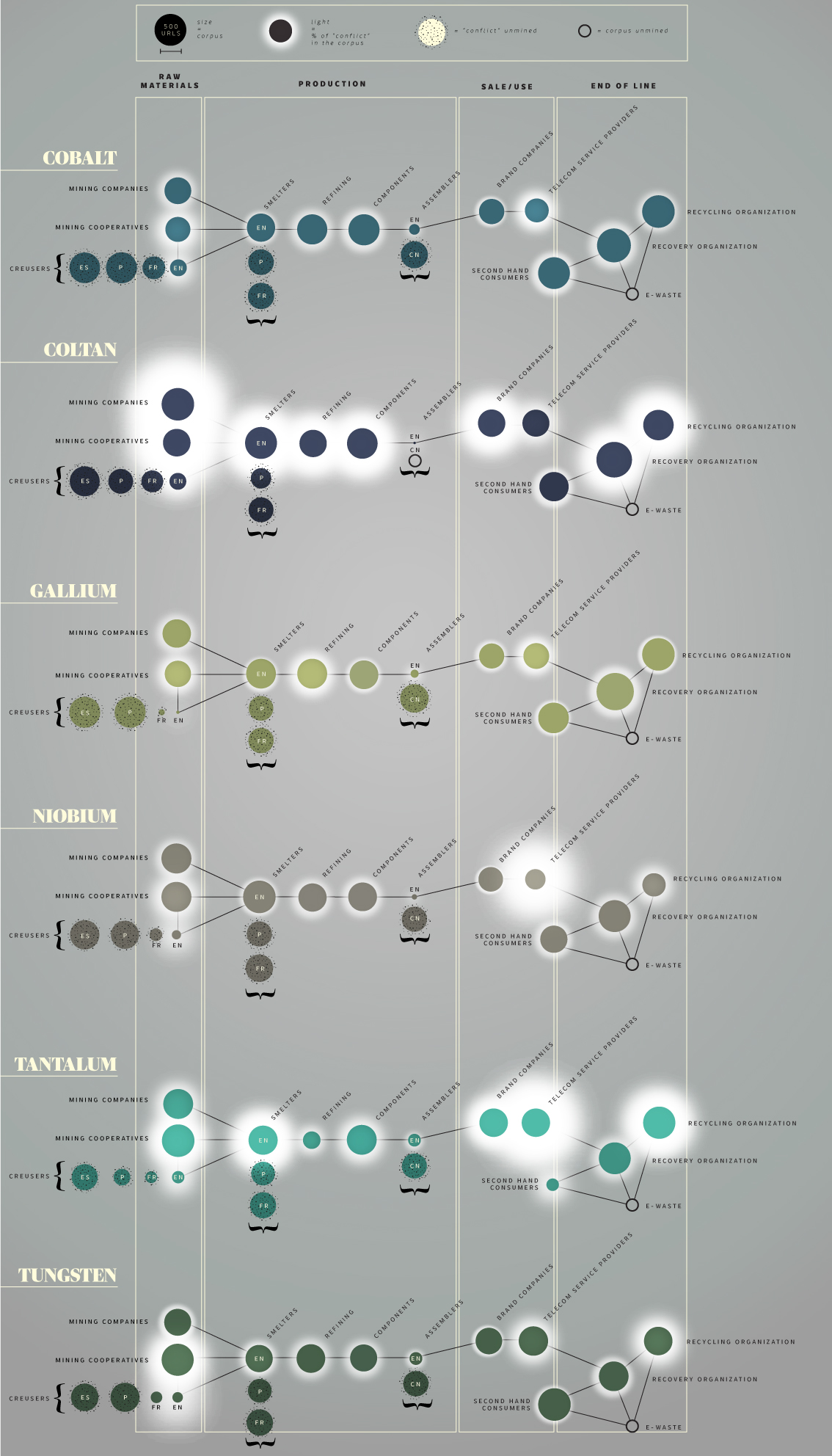You are here: Foswiki>Dmi Web>Summerschool2012Presentations>DmiSummer2012ConflictedMinerals (06 Jul 2012, JillHopke)Edit Attach
Conflicted Minerals
Introduction
There are nearly six billion mobile phone subscriptions worldwide, with global adoption at 87% in 2011. Mobile-broadband subscriptions are growing at 45% annually reaching almost 1.2 billion by 2011, with 159 countries equipped with 2G and/or 3G data services (International Telecommunications Union, 2011). These advances in information communication technologies have engendered an increase in conflict over the extraction and exploitation of the world's natural resources, as well as labor conditions globally. Apple Inc. makes up 15% of the U.S. market for smartphones, while Samsung holds on to 25% of the market (Reed, 2012). Apple, like other technological device vendors, claims to adhere to the "highest standards of social responsibility across our worldwide supply chain. We insist that all of our suppliers provide safe working conditions, treat workers with dignity and respect, and use environmentally responsible manufacturing processes" (Apple Inc., 2012). Yet, these policies have not been without contenion by NGOs and labor organizations.
Earlier in the week we heard from Bas van Abel of the De Waag Society about the FairPhone project to develop the world's first fair trade mobile phone, as well as from Baruch Gottlieb -- who later joined us as a project member -- on ethical tracing of the production chains of our everyday devices, making the claim that there is little information at various stages of the production chain in the mineral trade from raw materials to their use and end stage disposal.
We sought to explore the level of scrutiny at each stage of the mineral trade and device production to find out what information is available at each point in the extraction and production process.
Apple Inc. makes up 15% of the U.S. market for smartphones, while Samsung holds on to 25% of the market (Reed, 2012). Apple, like other technological device vendors, claims to adhere to the "highest standards of social responsibility across our worldwide supply chain. We insist that all of our suppliers provide safe working conditions, treat workers with dignity and respect, and use environmentally responsible manufacturing processes" (Apple Inc., 2012). Yet, these policies have not been without contenion by NGOs and labor organizations.
Earlier in the week we heard from Bas van Abel of the De Waag Society about the FairPhone project to develop the world's first fair trade mobile phone, as well as from Baruch Gottlieb -- who later joined us as a project member -- on ethical tracing of the production chains of our everyday devices, making the claim that there is little information at various stages of the production chain in the mineral trade from raw materials to their use and end stage disposal.
We sought to explore the level of scrutiny at each stage of the mineral trade and device production to find out what information is available at each point in the extraction and production process.
 Figure 1: Where do They Stand Within the Supply Chain? (from FairPhone, Waag Society).
Figure 1: Where do They Stand Within the Supply Chain? (from FairPhone, Waag Society).
Questions
To further complicate the claim that little information is available in particular areas of the mineral production chain leading to our everyday consumer devices, we ask: RQ1: What is the visibility of conflict in each node of the mobile phone supply chain involving production, refinement, and processing of concrete minerals? RQ2: Specifically, what information is available? What bullets on the production diagram are dark/light, corresponding to the availability of information? How untraceable are these minerals on the supply chain? RQ3: To what extent can we use the Web to study the level of conflict at point in the supply-production chain of our everyday devices?Method
Building on the presentations by Baruch and the FairPhone team, our group identified the key steps in the phone fabrication process, as well as a list of those six minerals that are used most actively in the process:- Tantalum
- Niobium
- Gallium
- Cobalt
- Coltan
- Tungsten
- The size of the corpus at each node (by mineral and language), and
- The percent of the results in the corpus that contain the term “conflict”.
Findings
Chain Supply Nodes – expectation analysisLevels most discussed The conflict minerals are each discussed on various levels: (most discussed is Coltan - Gallium/Nobium are less addressed)
- Coltan
- Tantalum
- Tungsten/Cobalt
- Gallium/Nobium
Visualization
Figure 2: Conflict minerals - level most discussed Figure 3: Visualization conflict minerals - chain supply: Fairphone
Figure 3: Visualization conflict minerals - chain supply: Fairphone

Recommended Readings
Arvidsson, A. (2008). “The Ethical Economy of Customer Coproduction.” Journal of Macromarketing, December 28(4). (Abstract) Beekman et al. (2008). "Communicating Ethical Traceability." Ethical Traceability and Communicating Food, The International Library of Environmental, Agricultural and Food Ethics (15). (Abstract) Chopra, A. and Kundu, A. (2008). "The Fair Tracing Project: Digital Tracing Technology and Indian Coffee.” Cotemporary South Asia (16:2), 217-30. (Abstract) Chopra, A. and Kundu, A. (2009). “The Fair Tracing Project: Mapping a Traceable Value Chain for Indian Coffee.” Contemporary South Asia (17:2), 213-23. (Abstract) Critchley, S. (2007). “Anarchic Metapolitics - political subjectivity and political action after Marx.” from Infinitely Demanding: Ethics of Commitment, Politics of Resistance, 88-105. (Abstract) Gottlieb, B. (2011). “The Materiality of Digital Utopias” from ISEA2011 proceedings, online. Marres, N. (forthcoming). “The Environmental Teapot and Other Household Objects: Reconnecting the Politics of Technology, Issues and Things.” To appear in: Objects and Materials: A Routledge Companion. P. Harvey et al (Eds.). London and New York: Routledge. (Do not quote)| I | Attachment | Action | Size | Date | Who | Comment |
|---|---|---|---|---|---|---|
| |
FINAL-VISUALIZATION.jpg | manage | 604 K | 06 Jul 2012 - 14:09 | JillHopke | |
| |
TOTALMINERALS.jpg | manage | 239 K | 06 Jul 2012 - 14:08 | JillHopke | |
| |
fair_phone_production_chain_diagram.png | manage | 102 K | 06 Jul 2012 - 10:31 | JillHopke |
Edit | Attach | Print version | History: r10 < r9 < r8 < r7 | Backlinks | View wiki text | Edit wiki text | More topic actions
Topic revision: r10 - 06 Jul 2012, JillHopke
 Copyright © by the contributing authors. All material on this collaboration platform is the property of the contributing authors.
Copyright © by the contributing authors. All material on this collaboration platform is the property of the contributing authors. Ideas, requests, problems regarding Foswiki? Send feedback


